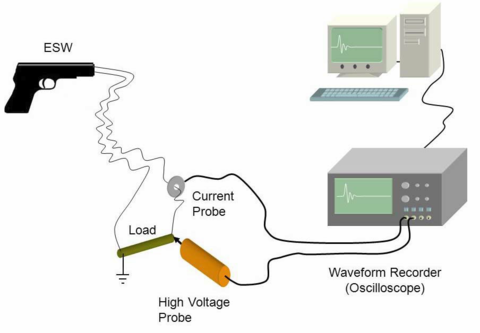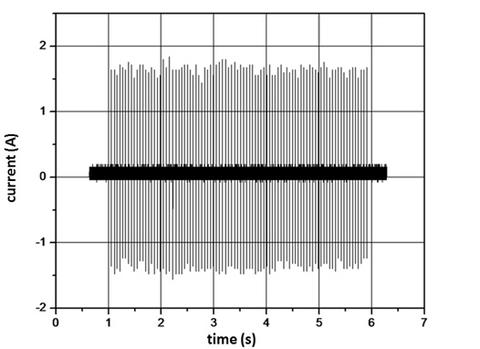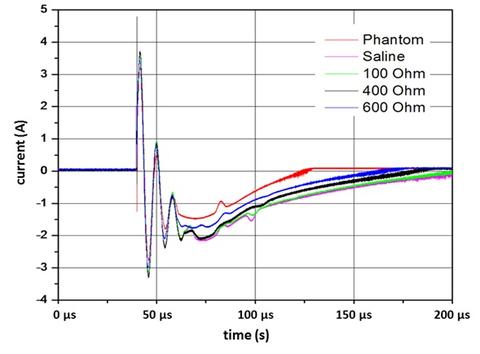The Electroshock Weapon (ESW)
The electroshock weapon (ESW), also known as a neuromuscular incapacitator, conducted energy weapon, conducted energy device, etc., is one component of a continuum of force that can be applied by law enforcement and military to control or subdue an assailant or combative person. The ESW functions by delivering a high-voltage, low-current, electrical shock to an individual. This shock is typically of sufficient energy to cause the individual to become temporarily incapacitated even for a few seconds after the current discharge has been completed.
In typical usage, the person being subdued is not permanently harmed by the output of an ESW. Additionally, there is the expectation by the operator of the ESW that the ESW can incapacitate a targeted person. To ensure that safe usage and incapacitation effectiveness are achieved requires knowledge of the physiological responses of a human to exposure from the output of an ESW, which in turn requires that essential parameters describing the output of the ESW are measured accurately and reproducibly. The development of documentary performance standards, including test methods, helps to maximize the reproducibility of measurements between different entities, promotes accurate communication of measurement results, promotes ESW technical advancement, and supports the assessment of its physiological effects. To this end, NIST led an informal workshop in 2011 in which manufacturers, end users, test labs, and medical researchers attended. The primary finding from this workshop was that the establishment of a test method standard was essential. The STG subsequently initiated, in March 2012, and led the development of an international standard through the auspices of the International Electrotechnical Commission (IEC). This standard, the IEC 62792:2105, “Measurement method for the output of electroshock weapons” was published in 2015.

The IEC 62792 describes three different test methods: a reference or primary method based on calibrated test artifacts and test instrumentation, a secondary method traceable to the primary method, and a tertiary method traceable to the secondary method. These methods were selected due to the diversity of measurement needs in the ESW community regarding accuracy and uncertainty of the test results. NIST developed and maintains the primary test method (depicted in Fig. 1), which comprises a programmable resistive load, a voltage probe, a current probe, and a waveform recorder. Details of the NIST measurement system can be found in Ref. 1. The waveform recorder is custom assembled from commercially-available electronics to provide an approximate time resolution of 1 ns, 3 dB attenuation bandwidth greater than 1 GHz, waveform epoch up to 12 s, amplitude resolution of at least 8 bits, and signal-to-noise ratio greater than 40 dB. These requirements are necessary to capture the burst of electrical pulses (see Fig. 2) output from an ESW for each trigger pull. Off-the-shelf waveform recorders do not have the bandwidth and/or the memory to support this sampling rate and epoch. The programmable resistor provides 100 Ω to 1000 Ω low-inductance loads, in 100 Ω steps, to allow comparison with manufacturer suggested test loads and to investigate the effects of other loads on the performance of the ESW (see Fig. 3). The programmable resistor can be reset between pulses within a pulse burst to validate manufacturer claims that specific ESW models can adjust their current output between pulses.

NIST developed methods to characterize the impulse response, linearity, transient gain, and timebase errors of the measurement system for correcting measured waveforms and computing instrumental uncertainties. The instrumental uncertainties, along with other uncertainty contributors, are used to calculate the measurement uncertainty for the measurands important for assessing ESW performance, such as voltage amplitude, current amplitude, net charge, and pulse duration. The linearity of the measurement system is determined using conventional swept-frequency techniques that provide the frequency magnitude response of the system. The transient gain is determined using a method developed by NIST, as are the timebase errors. The effects of the measurement system design and signal analyses methods on the pulse parameters of the ESW output is detailed in Ref. 4.

REFERENCES
- N.G. Paulter and D.R. Larson, “A Reference Measurement System for Electroshock Weapons,” 7th European Symposium on Non-Lethal Weapons, 3 to 5 June 2013, Stadthalle Ettlingen, Germany.
- N. G. Paulter, Jr. and D. R. Larson, “Pulse parameter uncertainty analysis,” Metrologia, 39(2), 143-155, 2002
- Stenbakken, G. N., and Deyst, J. P., “Time-base nonlinearity determination using iterated sine-fit analysis,” IEEE Trans. Instrum. Meas. 47(5), pp 1056-1061, 1998.
- N.G. Paulter, D. Jenkins, N. Ichikawa, and M. Leonesio, “Test methods for measuring the electrical output of electroshock weapons,” Journal of Biomedical Systems and Emerging Technologies, 2016, Vol 3, Issue 2, Article 110.
MAJOR ACCOMPLISHMENTS
Led the development of documentary standard describing the performance of ESW, the IEC 62792:2105, “Measurement method for the output of electroshock weapons,” that was published in 2015.
PUBLICATIONS
N.G. Paulter, D. Jenkins, N. Ichikawa, and M. Leonesio, “Test methods for measuring the electrical output of electroshock weapons,” Journal of Biomedical Systems and Emerging Technologies, 2016, Vol 3, Issue 2, Article 110. (https://tsapps.nist.gov/publication/get_pdf.cfm?pub_id=920175)
N.G. Paulter and D.R. Larson, “A Reference Measurement System for Electroshock Weapons,” 7th European Symposium on Non-Lethal Weapons, 3 to 5 June 2013, Stadthalle Ettlingen, Germany. (https://www.researchgate.net/publication/275961593_A_Reference_Measurement_System_for_Electroshock_Weapons)
N. G. Paulter, Jr. and D. R. Larson, “Pulse parameter uncertainty analysis,” Metrologia, 39(2), 143-155, 2002. (https://iopscience.iop.org/article/10.1088/0026-1394/39/2/4)
Stenbakken, G. N., and Deyst, J. P., “Time-base nonlinearity determination using iterated sine-fit analysis,” IEEE Trans. Instrum. Meas. 47(5), pp 1056-1061, 1998. (https://doi.org/10.1109/IMTC.1998.676969)
LINKS
To the IEC 62792: https://webstore.iec.ch/publication/21809
To the IEC TC 85: http://www.iec.ch/dyn/www/f?p=103:7:19800262584809::::FSP_ORG_ID,FSP_LANG_ID:1278,25
To the IEEE TC 10: https://ieee-ims.org/technical-committee/tc-10
How ESW work: https://en.wikipedia.org/wiki/Electroshock_weapon
To Leonesio Consulting: https://leonesio.com/
To David Jenkins: https://www.cav.psu.edu/directory-detail-g.aspx?q=dmj114
To Norimitsu Ichikawa: https://er-web02.sc.kogakuin.ac.jp/search/detail.html?systemId=26f6722eb58e317c&lang=en&st=researcher&size=10
To general description of nonlethal weapons: https://en.wikipedia.org/wiki/Non-lethal_weapon
To US DoD nonlethal weapons programs: https://jnlwp.defense.gov/
CUSTOMERS/CONTRIBUTORS/COLLABORATORS
Michael Leonesio, Leonesio Consulting, USA
Norimitsu Ichikawa, Kogakuin University, Japan
David Jenkins, Pennsylvania State University, USA
Contacts
-
(301) 975-5632

